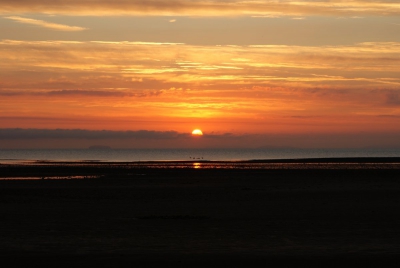The Bristol Channel floods of 30 January 1607 drowned many people and destroyed a large amount of farmland and livestock. The known tide heights, probable weather, extent and depth of flooding, and coastal flooding elsewhere in the UK on the same day all point to the cause being a storm surge rather than a tsunami.
The Bristol Channel (Welsh: Môr Hafren, pronounced [moːr ˈhavrɛn]) is a major inlet in the island of Great Britain, separating South Wales from Devon and Somerset in South West England. It extends from the lower estuary of the River Severn (Welsh: Afon Hafren) to the North Atlantic Ocean. It takes its name from the English city of Bristol, and is over 30 miles (50 km) wide at its western limit.
Long stretches of both sides of the coastline are designated as Heritage Coast. These include Exmoor, Bideford Bay, the Hartland Point peninsula, Lundy Island, Glamorgan, Gower Peninsula, Carmarthenshire, South Pembrokeshire and Caldey Island.
Until Tudor times the Bristol Channel was known as the Severn Sea, and it is still known as this in both Welsh: Môr Hafren and Cornish: Mor Havren.

1607Jan, 30
An estimated 200 square miles (51,800 ha) along the coasts of the Bristol Channel and Severn Estuary in England are destroyed by massive flooding, resulting in an estimated 2,000 deaths.
Choose Another Date
Events on 1607
- 30Jan
Bristol Channel floods, 1607
An estimated 200 square miles (51,800 ha) along the coasts of the Bristol Channel and Severn Estuary in England are destroyed by massive flooding, resulting in an estimated 2,000 deaths. - 24Feb
Claudio Monteverdi
L'Orfeo by Claudio Monteverdi, one of the first works recognized as an opera, receives its première performance. - 25Apr
Battle of Gibraltar (1607)
Eighty Years' War: The Dutch fleet destroys the anchored Spanish fleet at Gibraltar. - 5Oct
Paolo Sarpi
Assassins sent by Pope Paul V attempt to kill Venetian statesman and scientist Paolo Sarpi, who survives fifteen stiletto thrusts.

 English
English  español
español  français
français  português
português  русский
русский  العربية
العربية  简体中文
简体中文 